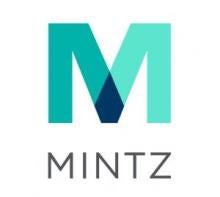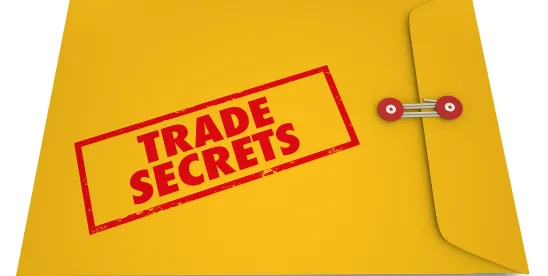Too many companies treat trade secret identification as something they can fix later, usually once litigation is underway. But by the time a claim is filed, it is already too late to build the evidentiary foundation you need. Courts want to know exactly what your trade secrets are, how they were protected, and why they matter, at the moment it matters most. You can easily spend millions of dollars in discovery, only to watch your case fall apart at summary judgment because you never tied down what should have been documented from the start. This is not a rare mistake. It is one companies make again and again.
The fix is straightforward but requires foresight. Build a trade secret asset management program before misappropriation happens. Identify and catalog what is actually confidential, define the value, document the secrecy measures, and maintain the records. Courts applying the Defend Trade Secrets Act (DTSA) will demand this level of detail at summary judgment. Many state laws, such as California’s CUTSA, will demand it even earlier, before discovery begins. If your company is serious about protecting its competitive edge, treating trade secrets as real assets instead of vague categories is no longer optional. Too often, trade secret owners are surprised not just by when they must prove sufficiency, but also by when the statute of limitations begins to run. That clock starts when the misappropriation is discovered or should have been discovered, not when the full extent of the harm is known. A well-run program avoids both problems by providing the clarity and documentation courts increasingly require.
Two recent appellate decisions make this reality impossible to ignore. In Quintara, the Ninth Circuit rejected a district court’s application of California’s early disclosure requirement in a DTSA-only case, reaffirming that sufficiency is a factual issue governed by federal standards. In Double Eagle, the Tenth Circuit affirmed dismissal at summary judgment where the plaintiff failed to show which aspects of its alleged trade secrets were actually secret or valuable. The procedural stages were different, but the warning is the same: whether sufficiency is tested early or late, it will be tested. Courts are no longer willing to let companies muddle through with generalities. If you are not already prepared to prove your trade secrets with specificity, you are not prepared at all.
Quintara Biosciences, Inc. v. Ruifeng Biztech, Inc., No. 23-16093 (9th Cir. Aug. 12, 2025)
Discovery Delays the Test, But Summary Judgment Delivers It
In Quintara, the Ninth Circuit reversed a district court's decision to apply California’s trade secret disclosure rules (Cal. Civ. Proc. Code § 2019.210) in a DTSA-only case. The lower court had struck nine of eleven trade secrets for lacking “reasonable particularity” and required disclosure of claim-style details reminiscent of patent litigation.
The Ninth Circuit rejected that approach. It held that where only federal trade secret claims are pled, federal rather than state rules govern. Sufficiency is a factual issue, not a procedural gatekeeping device, and courts should not use Rule 12(f) to strike alleged trade secrets mid-discovery unless they are truly scandalous or immaterial. The panel emphasized the iterative nature of trade secret litigation and the risk of prematurely dismissing potentially viable claims before discovery is complete. The key takeaway is simple: trade secret sufficiency under the DTSA is a matter for summary judgment, not early motion practice, but it does not eliminate the evidentiary requirements.
Double Eagle Alloys, Inc. v. Hooper, 134 F.4th 1078 (10th Cir. 2025)
You Can’t Wing It at Summary Judgment
In Double Eagle, the Tenth Circuit affirmed summary judgment against the plaintiff, finding that its descriptions of alloy specifications, pricing models, and customer drawings failed to meet the required level of particularity and evidentiary support. The court rejected the use of broad categories and generalized labels in place of clearly defined trade secrets, emphasizing that plaintiffs must do more than gesture at entire areas of technology or information. Echoing the Seventh Circuit’s guidance in IDX Systems Corp. v. Epic Systems Corp., 285 F.3d 581 (7th Cir. 2002), the Tenth Circuit reiterated that a plaintiff cannot simply “identify a kind of technology and then invite the court to hunt through the details in search of items meeting the statutory definition.”
Double Eagle failed on multiple fronts. It did not isolate which parts of its alloy standards were actually secret from the thousands of pages it presented to the court, failed to show how its pricing formulas were competitively unique, and offered no evidence of ownership over the customer-provided drawings it sought to protect. The evidence offered was either too vague, already public, or not proprietary to Double Eagle. As other courts have long emphasized, and as Double Eagle reinforces, trade secret plaintiffs must arrive at summary judgment prepared to prove secrecy, specificity, and value with concrete, admissible evidence.
Why a Trade Secret Asset Management Program Makes All the Difference
Because “We’ll Figure It Out Later” Is Not A Strategy, It’s A Liability
These cases are not just a warning about how to litigate, they are a wake-up call about how to prepare. Companies that proactively identify and catalog their trade secrets before any misappropriation occurs are in a much stronger position to withstand both procedural and evidentiary scrutiny. Under the DTSA, the absence of an early disclosure requirement may postpone the issue, but it does not lower the standard. Plaintiffs must still prove, with precision, what the trade secret is, how it was protected, and why it has value. That level of proof is rarely possible without clear documentation and internal alignment prepared well in advance. Under state laws like California’s CUTSA, the bar can come even earlier. Section 2019.210 requires plaintiffs to identify their trade secrets with reasonable particularity before discovery begins. Failure to do so can result in lost access to discovery or outright dismissal of claims, as Quintara came close to demonstrating.
The lesson is simple. A trade secret asset management program that identifies, documents, and maintains the company’s key confidential information before litigation arises can address the core issues courts will scrutinize at both the pleading stage and summary judgment. Without one, companies risk going through full discovery only to lose on a technicality that could have been prevented with proper preparation. In an environment where courts are tightening the standards for what qualifies as a protectable trade secret, being unprepared is no longer a viable option. Do not let this be you.
Practical Takeaways for Plaintiffs and Defendants
For Defendants:
- Early procedural strikes are unlikely in DTSA-only cases, and courts are reluctant to strike before discovery ends
- Discovery is the strategic window to expose vague, inconsistent, or shifting trade secret claims
- Summary judgment remains the pressure point where plaintiffs must prove secrecy and specificity with hard evidence
- Even without a strike, early motions can frame the dispute and force plaintiffs to clarify weak claims
For Trade Secret Owners:
- A well-prepared trade secret asset management program can prevent loss at both the pleading and summary judgment stages
- State statutes like CUTSA often require disclosure early, sometimes before discovery begins, be prepared. This is not a significantly higher bar if proper identification of trade secrets is already occurring
- Courts will demand detailed, factual evidence at summary judgment, not broad categories or generalities
- Trade secrets should be documented with specificity, including what is secret, how it is kept secret, and why the trade secret matters
- Public or common knowledge must be carved out, and competitive value must be substantiated
- Treat trade secrets as you would a patent claim: clear, specific, and provable
- Internal programs should be part of core IP strategy, not just litigation prep






 />i
/>i

